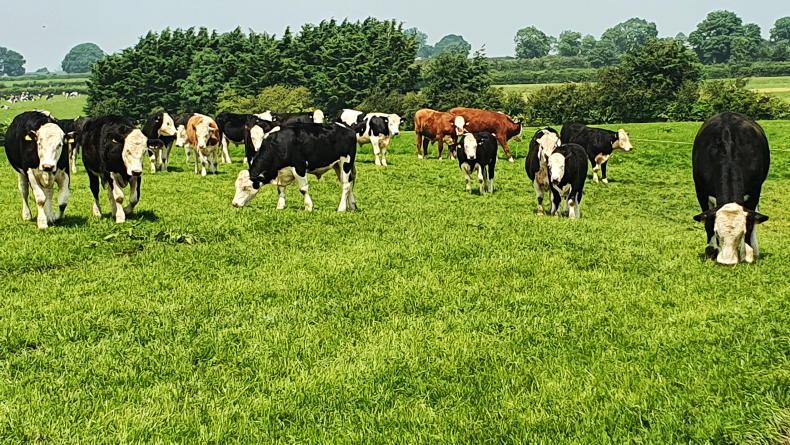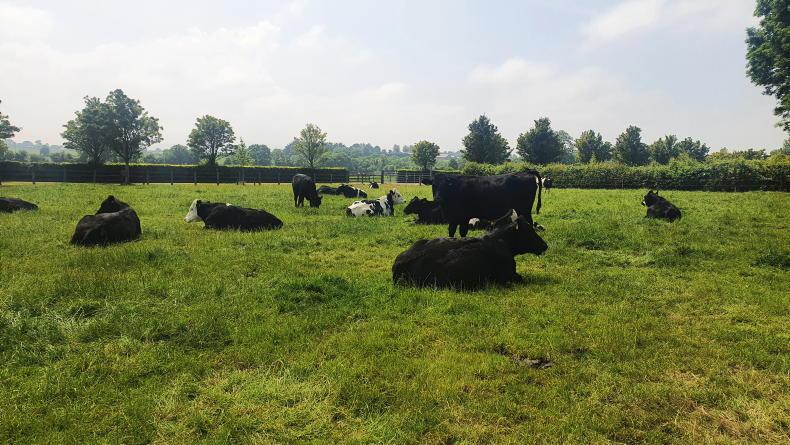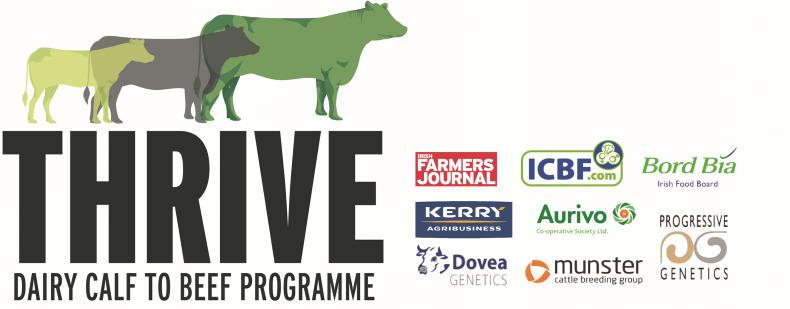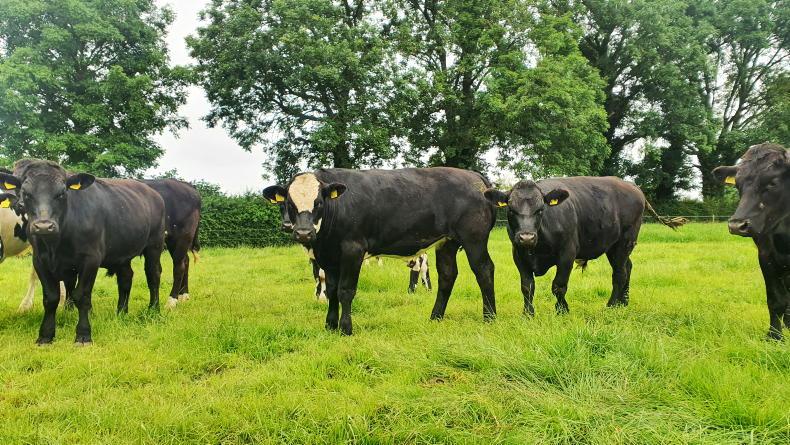Like many farms across the country, June proved to be a difficult month when it came to managing grass and maintaining grass quality ahead of cattle.
A cold April and a cold, wet May meant total grass growth was well behind average as we entered June.
The arrival of heat saw grass growth rates rocket while at the same time seed head emergence, which is typically spread out over a 10-day to two-week period in normal years, seemed to all come together, resulting in pasture quality taking a nose dive.

Hereford heifers on the last of the heavier grass covers.
As with all dairy calf-to-beef systems, our demand for grass in the first half of the season is relatively low – particularly so for the farm’s location and ability to grow grass. This can make managing grazing quite difficult at certain times of the year.
One way to minimise this is to close a large proportion of the farm for first-cut silage which reduces the grazing platform up until mid-June when aftergrass becomes ready for grazing.
The current daily demand for grass sits at 36kg DM/ha while growth over the last few weeks has been averaging around 45kg DM/ha.

A group of bullocks grazing silage aftergrass.
Aftergrass
Almost all stock groups are now grazing silage aftergrass which, at covers of between 1,300kg DM/ha and 1,600kg DM/ha are just ideal for grazing. Much of the grazing platform now has relatively low covers as some was cut as surplus grazing while the remainder was topped after grazing in the last rotation.
Regrowth on the topped ground is slower than what was cut for silage. All this ground has received around 25 units of nitrogen since grazing/cutting.

Grazing on Thrive demo farm early July.
Weighing cattle
All cattle will be weighed again in the next fortnight. For the finishing cattle, this weight will determine the next move for cattle. The heavier cattle and most forward will start to get meal at grass.
Heifers will be built up to 3kg/day while bullocks will get 4kg/day of a 12% protein finishing ration. Some of the heifers are already very fleshy and we may be able to slaughter a small number without any meal feeding.

Like many farms across the country, June proved to be a difficult month when it came to managing grass and maintaining grass quality ahead of cattle.
A cold April and a cold, wet May meant total grass growth was well behind average as we entered June.
The arrival of heat saw grass growth rates rocket while at the same time seed head emergence, which is typically spread out over a 10-day to two-week period in normal years, seemed to all come together, resulting in pasture quality taking a nose dive.

Hereford heifers on the last of the heavier grass covers.
As with all dairy calf-to-beef systems, our demand for grass in the first half of the season is relatively low – particularly so for the farm’s location and ability to grow grass. This can make managing grazing quite difficult at certain times of the year.
One way to minimise this is to close a large proportion of the farm for first-cut silage which reduces the grazing platform up until mid-June when aftergrass becomes ready for grazing.
The current daily demand for grass sits at 36kg DM/ha while growth over the last few weeks has been averaging around 45kg DM/ha.

A group of bullocks grazing silage aftergrass.
Aftergrass
Almost all stock groups are now grazing silage aftergrass which, at covers of between 1,300kg DM/ha and 1,600kg DM/ha are just ideal for grazing. Much of the grazing platform now has relatively low covers as some was cut as surplus grazing while the remainder was topped after grazing in the last rotation.
Regrowth on the topped ground is slower than what was cut for silage. All this ground has received around 25 units of nitrogen since grazing/cutting.

Grazing on Thrive demo farm early July.
Weighing cattle
All cattle will be weighed again in the next fortnight. For the finishing cattle, this weight will determine the next move for cattle. The heavier cattle and most forward will start to get meal at grass.
Heifers will be built up to 3kg/day while bullocks will get 4kg/day of a 12% protein finishing ration. Some of the heifers are already very fleshy and we may be able to slaughter a small number without any meal feeding.











 This is a subscriber-only article
This is a subscriber-only article











SHARING OPTIONS: